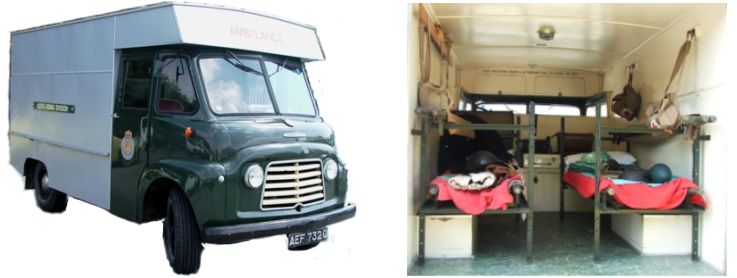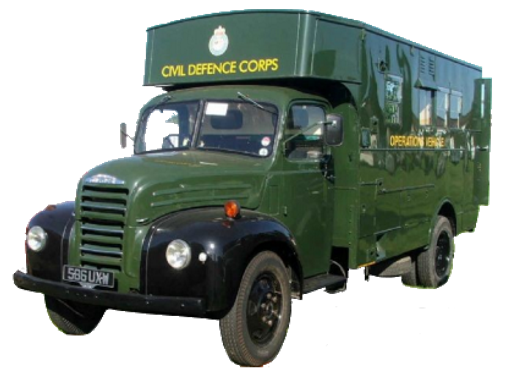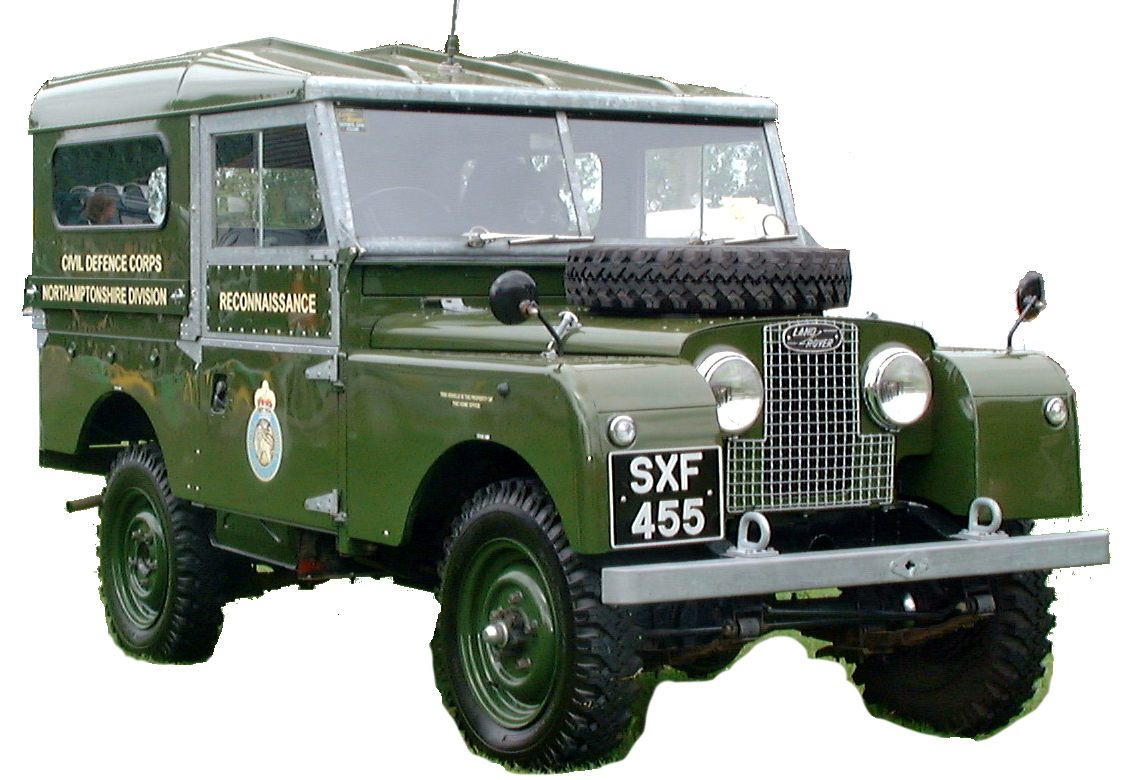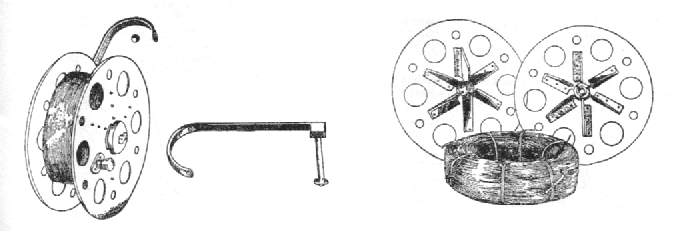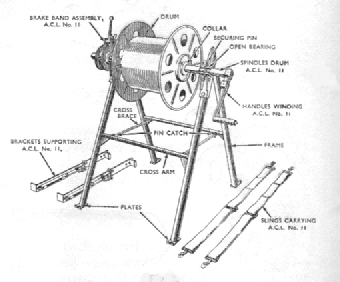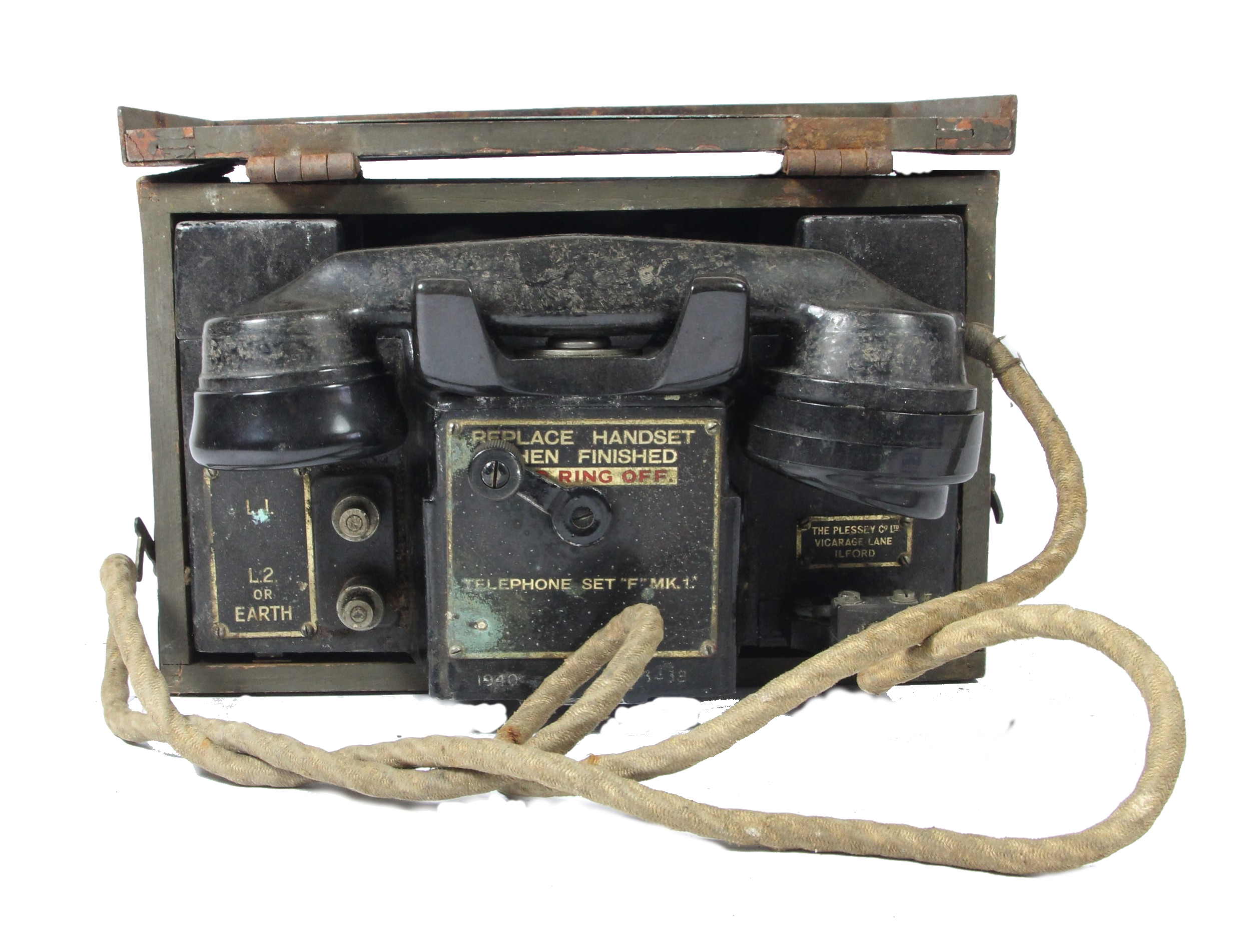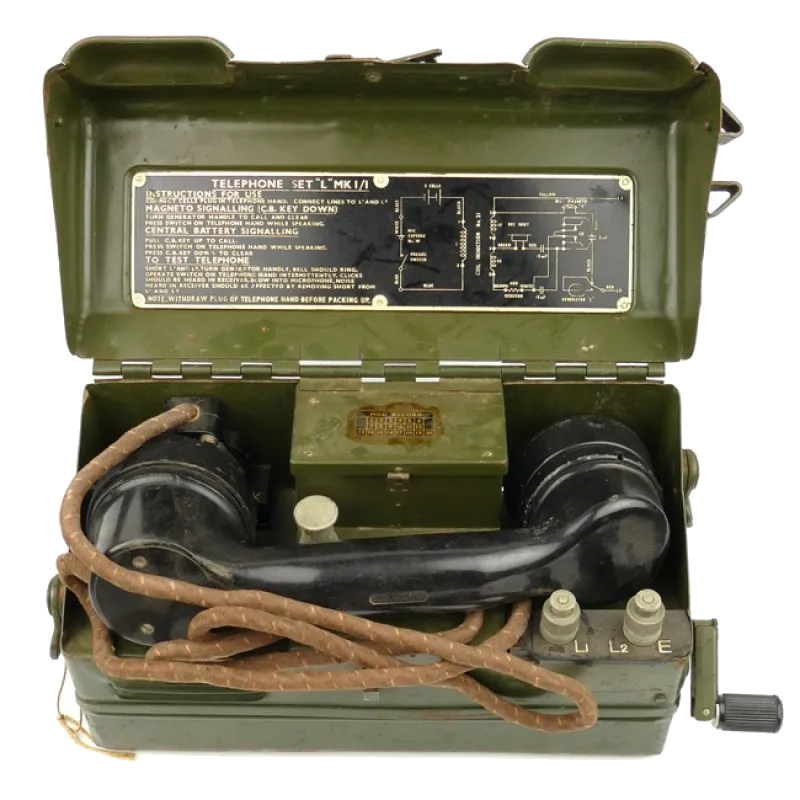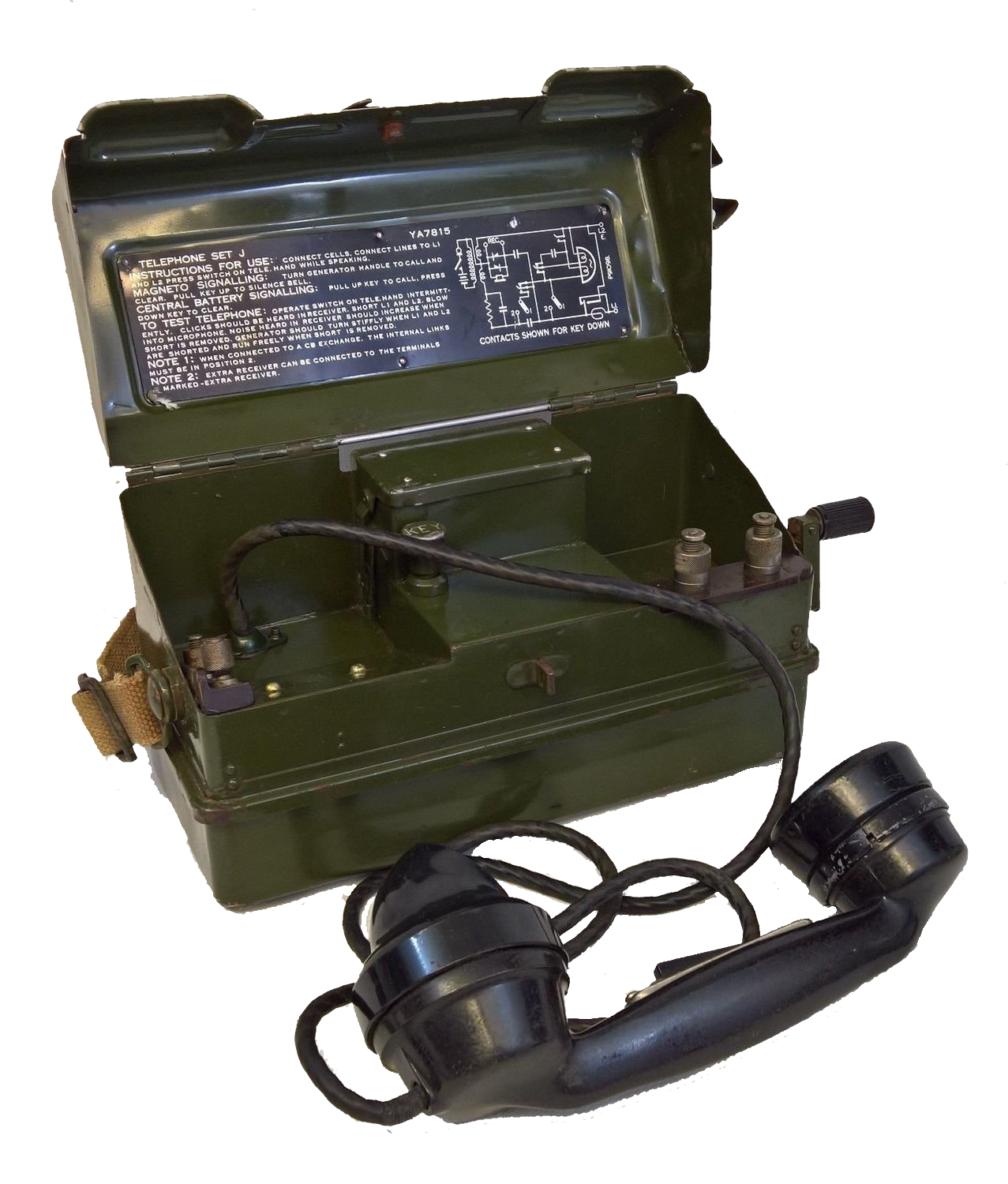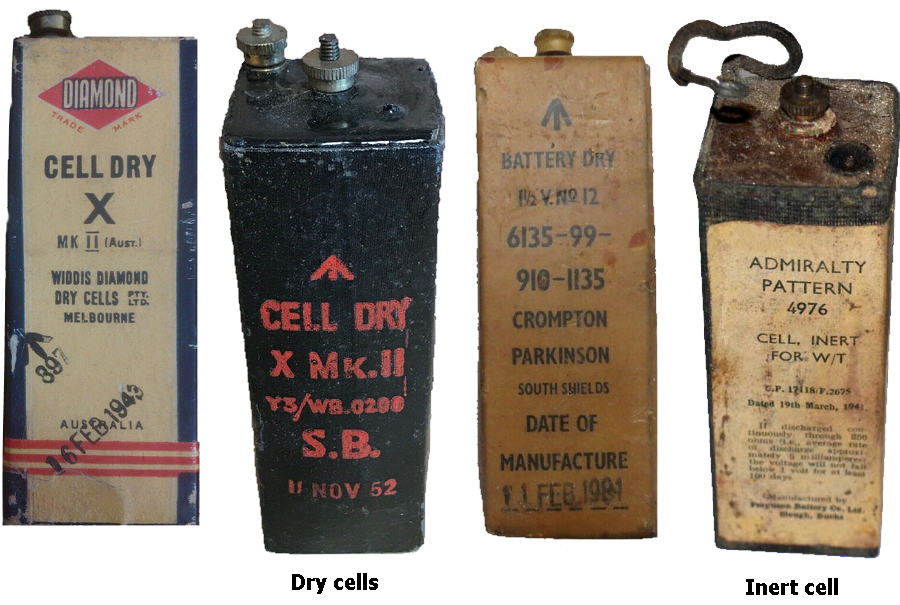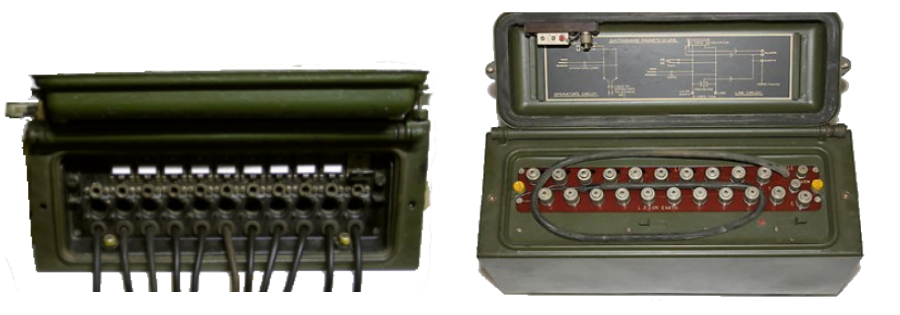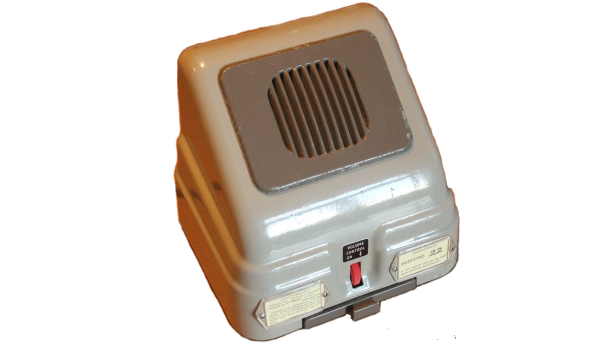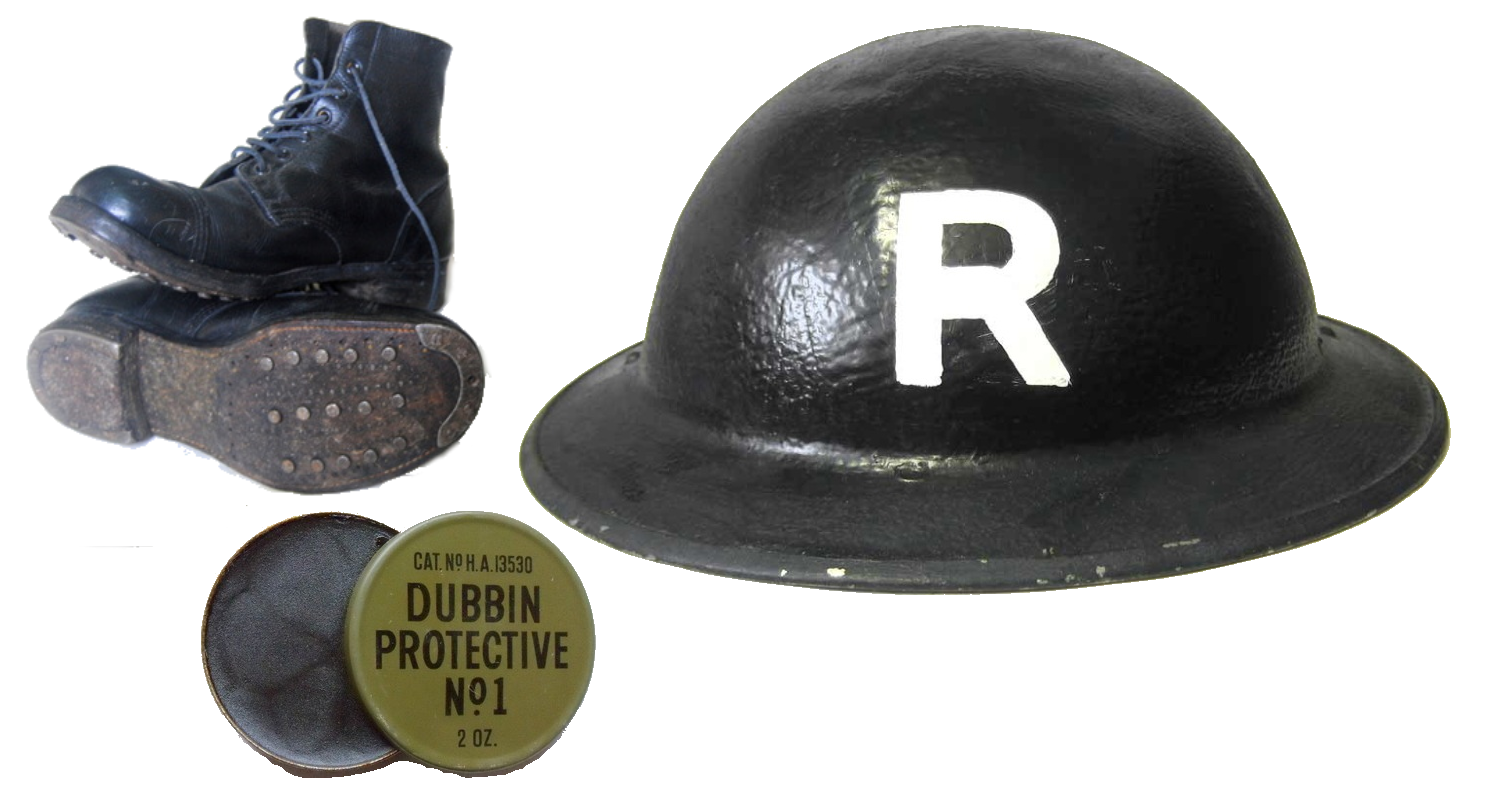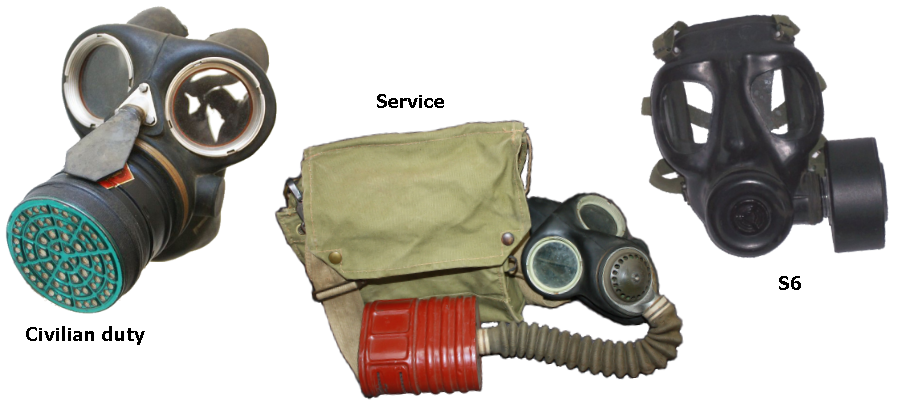Civil Defence Corps Equipment
The Corps was supplied with a wide range of equipment as befitted the range of tasks they needed to fulfill. Some of it was extremely dated in terms of origin, indeed some dated from as early as 1914, and some equipment was originally supplied to the ARP/Civil Defence during WWII. However, much was developed during the lifetime of the Corps. In the earliest period the Corps had no radiological equipment, the first issue being personal dosimeters and chargers in 1951.
Ambulance
This was the ambulance used by the Civil Defence Corps from 1965, it was based on a standard Commer commercial van of the period, the only modifications being the fitting of stretcher racks and storage for first aid equipment. They had no sirens, flashing lights or communications equipment. Similar sized Bedford vans were also used.
When the Corps was disbanded the majority were auctioned off, I know of one that became a mobile greengrocer's van and another a baker's van. The latter was still in use over forty years later.
The interior shows an ambulance fully kitted out. The only non-standard items for the period are the blankets, which were standard army grey originally, and one of the tin hats, which is modern. As can be seen the ambulance could accommodate four stretchers, and if the upper pair were raised, eight seated casualties.
A conversion kit was available to convert similar vehicles. It was reckoned that a team of two could convert a similar sized van to an ambulance in about half an hour, by simply drilling and bolting in the stretcher frames.
Ambulance columns were also equipped with control, and communications vehicles, motorcycles for messengers and two officer staff cars. The control and communications vehicles were of the same types as used by the Headquarters Section.
Headquarters Section Operations Vehicle
These vehicles were intended to be placed in areas where the static operations bases had been put out of action. They were based upon Fordson Thames ET6 vans. They could not provide accommodation for a full team. They were equipped with communications equipment, including a vhf radio which was in the cab with an extension to the interior, a 10 way magneto switchboard and field telephones (tele-J or L). Other equipment included a small generator, the hatch for which you can see just behind the passenger door, field cable and an A-frame cable laying apparatus. Radiac equipment included a Contamination Meter and a Meter Radiac Survey No 1 or 2. The operations vehicle would be co-located with a signals vehicle, which were fitted out with four telephone operator positions, a Signalmaster's desk and a switchboard.Reconnaissance vehicle
Reconnaissance vehicles were equipped with radiac instruments and vhf radio, normally manned by a team of two from the Scientific and Intelligence sub-section of the HQ Section. Their task was to conduct reconnaissance operations, including radiological surveys in areas where warden posts either did not exist, or where they had been knocked out by enemy action. Following the demise of the Corps, this became the responsibility of the Royal Observer Corps, who had been trained in radiation monitoring since the early 50s.Communications
Audible alarm
The gas rattle was one of the longest lived pieces of equipment in use by the Civil Defence Corps. Without modification it had served since the early years of the trenches of WWI. It had two uses with the Corps, one of which was the same as in WWI, namely warning the populace of a gas attack, a role that was would have also been used in WWII if Germany had used chemical weapons. The second was to warn of the imminent arrival of fallout. In both cases it would have been used by members of the Warden Section, either on foot or on bicycle. Alternatives to the gas rattle were a whistle or a handbell, as had been the case in WWII, all wardens wore a whistle on a lanyard as part of their uniform
Line Communications.
The normal mode of line communication was the GPO network, however where that failed or when temporary locations were in use this was to be augmented or replaced by field telephone lines laid by HQ Sub-section Signal B units aka Field cable Parties.
Cable and Cable Laying
A Field Cable Party comprised a total of three, including a Field Cable Party Leader plus two. One of the team would be the driver. As transport they had a canvas topped Landrover and trailer. The vehicle and trailer would carry a variety of tools, including three linesmen�s toolkits, a ladder, crowbar, spade and a gas powered soldering iron. In addition to cable and cable laying apparatus, there were also reels of thread, line labels, three-part wooden poles, screw fittings for supporting cables, tent-pegs,earth pins. One item of essential kit was the crook pole, which was a long pole with a steel spiral fitting at one end, this was used to feed cable over hedges and walls, it could be used by a pair of linesmen on the back of the Landrover, being driven at slow speed (officially not more than 10mph). A linesman�s kit contained a jack knife, wire cutters, pliers and a basic multimeter plus a pair of test leads (these were made by each linesman as part of training they had a pair of safety pins soldered to two lengths of cable). The vehicles also carried a number of field telephones and a Switchboard, Magneto.Three kinds of cable were used by the Corps:
- Cable, assault No. 2, was a lightweight single cable. It was intended as a rapid and temporary cable, being used in conjunction with Pins, Earth, Small to provide an earth return circuit, it was simply laid on the ground. The cable was supplied either on small drums or in coils packed in hessian. Cable, assault was used with Apparatus, Cable, Laying No. 10. Cable, assault was rarely used by the Civil Defence Corps.
- Cable, D.3, Twisted, was supplied until some point in the fifties. It consisted of two single D.3 cables of different colours twisted together. The conductors consisted of a number of steel strands and one or more copper strands. The number of each type of strand differed, but typically seven strands of steel and one of copper.
- Cable, D.10, Twisted, consisted of a twisted pair of cables. Each conductor consisted of four copper and three steel strands, covered with polythene and a thin woven nylon sheathing. This cable was provided either on a cable drum, or in the form of a dispenser coil. The dispenser coil could be used in several ways. It could be clipped to a linesman's webbing using the D-rings provided, it could be placed on the giound and the cable pulled out from the centre, or it could be attached to a vehicle and paid out as the vehicle proceeded. The drum used for D.10, was the Reel, Cable No. 5, which could be used with the Apparatus, Cable Laying, No.11, or with the Bar, Carrying. Lightweight.
Field Telephones
All telephone instruments used for line communications had a type letter, thus you will commonly come across Type 'B', type 'F', type 'L' & Type 'J'. Despite commonly said, the 'J' does not stand for 'Jungle' meaning an instrument designed for use in jungle warfare. Civil Defence used the Types F, L & J together with "D" class cables. The most common type was the tele J. The J was in a steel case which was immersion proof, with a hinged lid and a carrying strap.
Telephone cells (batteries)
These telephones were all powered either by two Cells, Dry X, or two Cells, Inert S. Both cells were 1.5 volt Leclanch� types. The difference being that the inert cell was dry, it was activated by adding tap water.
Switchboard Magneto 10 Way
The Switchboard Magneto 10 Way, was designed for use with field telephone circuits. It could not be connected to standard telephone lines. When fitted to operations vehicles or in buildings they were permanently wired with a bulkhead terminal frame wired through to the exterior. If you look at the instrument shown you will note that there are eleven cables, each was terminated in a jack. No operator's circuit was included, and a separate telephone set "J" or "L" had to be used. The leftmost cable is the operator's jack. The operator's set was connected at the rear of the switchboard. The 'flag' above the right socket and cable has 'dropped' indicating that someone is calling. Details of operating procedure can be found in Civil Defence Handbook No 1 "Line & Wireless Instruction" (downloadable as a pdf on the Civil Defence Corps documents page).Radio communications
Radio communications was introduced in about 1950/51. The first radios were heavy back-pack type units, which used valves (tubes) and heavy batteries. I don't know who the makers or models were at this time, but they were similar to those used by the police. The batteries then available gave them only a very few hours of operation. By the mid-1960s the use of walkie-talkie type radios had been dropped. Certain mobile units and the HQ Section were equipped with Pye equipment in the Ranger series. The frequencies used were in the range 155-168MHz. Vehicles were fitted with simple 1/4 wave whip antennas, for fixed locations 1/4 wave co-axial choked whips were used.Carrier Receiver WB400a
Civil Defence training centres and HQs were equipped with the Carrier Receiver 400A linked to local Carrier Control Points, to receive the so-called 'four minute warning'. In my own HQ it was was initially sited in the office of the centre, but moved into the main hall, on a shelf next to the bar hatch.Radiac Equipment
The Corps were issued with the following items of equipment at various times commencing in 1951, personal dosimeters, dosimeter chargers No 1 & Mk2 No 2, Meter Survey Radiac Nos 1 & 2 and the Trainer No1, and the Contamination Meters Mk 1 & Mk 2. Details can be found on the Radiac Equipment page.Personal Protective Equipment
All personnel were meant to be issued with steel helmets (aka tin hats), although I never actually got one, I did get one issued when we were on exercises. Officers and section leaders had white, others were black, with letters indicating their sections. The only other personal protection equipment issued were respirators plus gloves and boots and gaiters to the Rescue and Field Cable personnel. The boots were the standard issue "ammo boots" with hobnails although we didn't have to do the army "spit-and-polish" routine as they were work boots, and ordinary shoes were worn on parade and on other non-working occasions. What the boots did need was the application of copious amounts of "Dubbin Protective No1" if you could get hold of it or else you had to buy your own commercial equivalent, otherwise the boots were neither comfortable nor completely waterproof! The gaiters came in a variety of colours, if you were lucky they were black, they could also be white, khaki or Air Force grey (I got the latter) - it all depended on what stores had in stock. if they were not black you had to spend hours brushing black boot polish into them.Respirators
Until 1965, the Civil Defence Corps were issued with modified WWII civilian duty respirators, or for some duties the Service Respirator but these were replaced with the services issue S6 respirator. There were two serious issues with this latter type. First they could not be worn with glasses, and the lenses could not be changed or be used with a microphone. For spectacle wearers and radio operators the modified civilian duty respirator was retained, the only modification being a change to the filter canister. The civilian duty respirator had an extra filter taped on the front when they were issued later. For extended duty in higher risk situations the service respirator was used. All Civil Defence Corps personnel were trained in the fitting and use of respirators. Periodically we would be expected to work in respirators. Some personnel also attended special gas schools. At the gas schools more detailed training on respirators and war gases was given, in addition we had to enter a gas chamber or van, wearing our respirators, then an irritant guess was released. Afer a period of time we had to remove our respirators for a short period before were allowed out.Anti-gas clothing
Two versions of anti-gas clothing were used until about 1964/5, they were identical to the World War 2 issues. They were the "Heavy" and "Light" Anti-Gas Outfits. During training I wore a "Light" set, and this was more than heavy enough when doing mildly strenuous work (cable laying) for one hour. In reality I should probably have worn the "Heavy".Stirrup pump
The Stirrup Pump was a surprisingly effective means of dealing with a small scale fire. It was the same equipment as used with great success during WWII. It was intended to be operated by a team of three or four. No 1 would be on the business end directing the water onto the fire and was in charge, number two pumped and three and four would keep the bucket supplied with water. Only No 1 would be inside the room where the fire was. The only instructions given by No.1 were 'water on' and 'cease pumping'.I remember our training given by our Rescue Section instructor, Mr Stimpson. We went to another Civil Defence HQ, from memory Ashford in Middlesex, where they had a fire training building. It was made of corrugated iron, with a room about 10 feet square which had one door and no window. The door opened into a smaller room which acted as a corridor. The inner room was half filled with old furniture which had been soaked in paraffin and lit. Once the fire was going well we took it in turns to go in and tackle the blaze. We also had to try standing, which rapidly taught you about the need to keep low down. The only safety equipment we had was our tin hats. All the time we were being observed by the instructor, he had the additional advantage of a wet tea towel round his face. When he came out he pulled out a battered old pipe and lit up and said, 'Time for a smoke break lads.'
